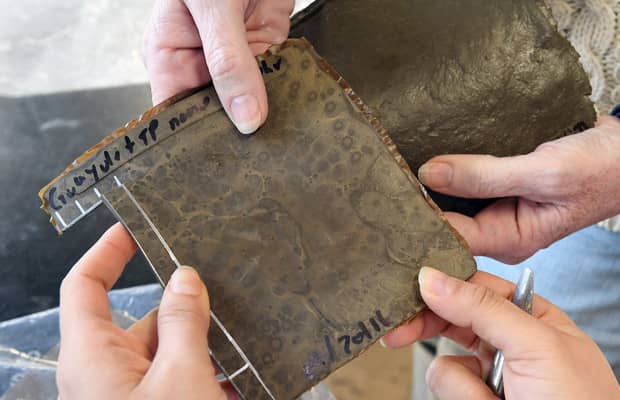According to the United Nations Environment Program, about a third of all the food produced in the world is wasted, which accounts for 1.3 billion tons a year. The only way we know of utilizing food waste is by turning it into compost, but this method may change with the latest research conducted at Ohio State University for a technology that can incorporate food waste into rubber tires.
Researchers have discovered that food waste can partially replace the petroleum-based filler that is used in manufacturing tires. The fillers made with wasted food were used for manufacturing rubber which exceeded the industrial standards for performance.
Katrina Cornish, Ohio Research Scholar and Endowed Chair in Biomaterials at Ohio state, was the lead researcher for the project. Cornish has spent years on rubber manufacturing research, cultivating new rubber sources including a dandelion that produces rubber. The new method can turn eggshells and tomato peels into perfect replacements of carbon black, a petroleum-based filler.
The filler made with food waste will not only make rubber production sustainable, but it will also keep waste out of landfills while reducing a country’s dependence on foreign oil. The carbon black filler in the automobile tire makes up about 30% of it, making it durable. With the fluctuation in petroleum prices, the cost of the filler varies and can even become hard to obtain.
“The tire industry is growing very quickly, and we don’t just need more natural rubber, we need more filler, too,” says Cornish. “The number of tires being produced worldwide is going up all the time, so countries are using all the carbon black they can make. There’s no longer a surplus, so we can’t just buy some from Russia to make up the difference like we used to. At the same time, we need to have more sustainability.”
If you thought what good would a few breakfast eggshells and tomato peels do, you might find it interesting that Americans consume 100 billion eggs and 13 million tons of tomatoes every year. Cindy Barrera, a postdoc researcher at Cornish’s lab, found the ability of eggshells to provide larger surface area due to its porous microstructures. Tomato peel, which is slightly hard to digest by humans is highly stable at high temperatures and can be used to generate a filler with good performance.
As you might have guessed already, since there is no more carbon black involved in the process, the rubber will not be as black. It is rather reddish-brown, and the color varies with the amount of tomato or eggshell in it. Cornish and Barrera along with a doctoral student Tony Ren, are testing different ways to add color to the materials.
We would appreciate your feedback in the comments’ section below!

